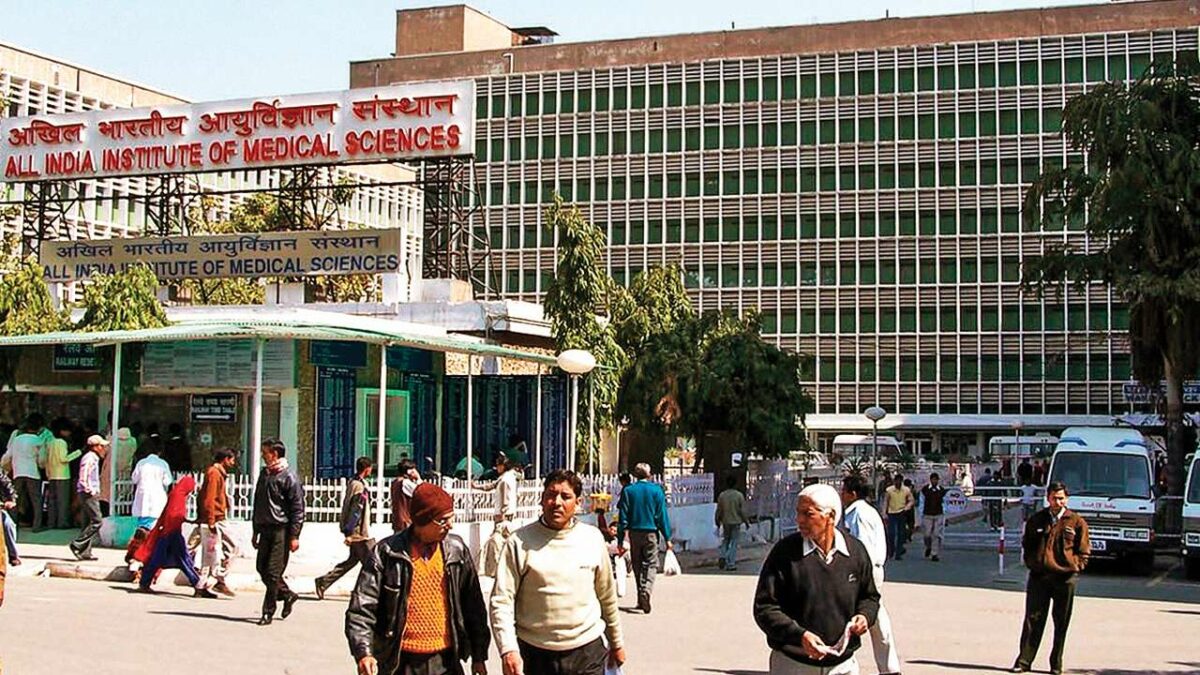India is currently facing an outbreak of conjunctivitis, commonly known as ‘red eyes,’ a contagious eye infection. The situation has led to a significant influx of patients at AIIMS Delhi, with over 100 cases reported daily.
Doctors and health experts have noted that there is typically a surge in conjunctivitis cases during the monsoon season each year. However, this year has seen an unusual increase in eye flu cases, which is attributed to the heavy and continuous rainfall, leading to flooding in various areas.

(Image Source – dnaindia)
Reason for the influx of red eyes
This contagious eye condition involves the inflammation of the conjunctiva, a thin membrane that covers the white part of the eye and the inner eyelids, leading to uncomfortable symptoms like redness, itching, and excessive tearing. The outbreak has been triggered by various factors, including viral and bacterial infections, allergies, and exposure to irritants. Bacterial and viral conjunctivitis is contagious and often spreads while being in direct contact with an infected person’s bodily fluids, usually through hand-to-eye contact. People in crowded areas, offices and children are most likely to get pink eye.
The outbreak has been triggered by incessant rains and flooding in many areas of the country, resulting in compromised hygiene conditions. The prevailing high humidity further facilitates the spread of the disease. The primary cause behind the outbreak is attributed to a viral infection, which is rapidly spreading across different regions in the country.
Furthermore, in the aftermath of the COVID-19 pandemic, the human body appears to be more vulnerable to various types of viral infections. Therefore, maintaining a high standard of hand hygiene becomes imperative.
Symptoms & Cure of conjunctivitis
Common symptoms of conjunctivitis include redness, itching, pain, excessive tearing, and puffy eyes. In some cases, there may be discharge or crusting around the eyes. It is crucial to avoid wearing contact lenses while experiencing conjunctivitis.
If someone is infected, they should promptly consult an ophthalmologist, who might prescribe antibiotic eye drops depending on the severity of the symptoms. In most instances, the symptoms tend to resolve within 5-7 days.
Frequent handwashing is essential to prevent the spread of the infection. While wearing sunglasses cannot prevent the transmission of the disease, they can help individuals refrain from touching their eyes, which is a common cause of infection spread.
Should we worry?
Maintaining personal hygiene is a must during monsoons. Avoid touching your eyes with your hands and regularly wash them.
According to scientists, conjunctivitis is a common occurrence in India, particularly during the rainy season. Although it can spread easily, it’s important to understand that conjunctivitis usually resolves on its own and seldom results in any permanent eye damage.













